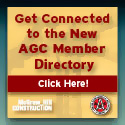
|
www.agc.org Contact Us Archives/Subscribe Advertise IT Forum IT Forum Steering Committee |
A3 — Business Hosted VoIPAnytime, Anywhere, Any Device By Glen Gaillard, Pingtone Communications Fixed-mobile convergence (FMC) describes integrated connectivity between fixed and wireless telecommunication networks. How does this technology apply to the business environment? The goal of FMC is to provide business users with one phone number for business calls, while being able to access applications in a variety of ways, via a variety of networks. The technology enables all facets of business communications to effectively take place over a multitude of device types, regardless of location. With more employees working away from the office, it’s become increasingly difficult for customers and colleagues to reach the remote workforce given the different devices and numbers – mobile, office, home – they may be using. In such a disjointed environment, a solution is needed to make communication as seamless as possible – whether an employee is working from office, road or home. Enterprise businesses and federal government agencies are evaluating ways to empower their workforces to be mobile while maintaining professional presence. Many government entities are mandated to adopt at least one cloud-based service migration, which many times include a telephony component. As the government upgrades legacy applications and phone systems, the opportunity to take advantage of FMC and A3 is more apparent than ever. Professional presence is more critical than ever as employee turnover during difficult economic times has created the prospect of communication with business partners ending abruptly because communication has been with personal home and cell phones rather than at corporate-issued numbers. With the advent of mobile phones and increased prevalence of smartphones, businesses are realizing the importance of maintaining a professional appearance through standardized corporate voice messages and tracking workforce phone usage/productivity, all possible now that all devices can be converged onto a corporate platform. Given the high entry costs of premises-based FMC equipment and complexities of integrating it with the end-users’ PBX, hosted VoIP solutions are providing an interesting dynamic to reduce barriers. Hosted solutions have taken off as more companies adopt cloud-based services for IT infrastructure, which today is including VoIP and the adjoining FMC components. "Anywhere" telephony solutions provide a native fixed convergence that lets end-users designate a single phone number for all incoming/outgoing calls, regardless of which phone they are using — mobile, office PBX, home, etc. Calls to a single number ring all phones and the user is free to answer on any device. Once a call is active on the single number, the user is free to pick up any other device and continue the conversation uninterrupted. For example, if you’re on a conference call but need to leave the office for your child’s soccer game – you can actually move the call to mobile without interruption. Defining Fixed Mobile Convergence At the device layer, our anytime, anywhere world demands ubiquitous connectivity and device manufacturers are heeding that desire with innovation. In terms of network access, manufacturers continue to incorporate expanded capabilities with multiple wired and wireless connectivity options. As an example, increasingly mobile phones and smartphones come with wireless LAN connectivity and mobile data packages. In addition, manufacturers are responding to the convergence in applications by delivering powerful processing and display capabilities. Collaborative applications are on the rise, in particular. For instance, simple instant messaging applications have evolved to incorporate image sharing as well as real-time voice and video sessions. Benefits to the Enterprise The most widely used mobile application today is voice telephony. And with more employees relying on cell phones as a primary voice tool, the ability for the enterprise to have some control over use, for both regulatory compliance – including HIPAA, Sarbanes Oxley and Basel II – and cost reasons is a good place to start. From a user perspective, the need to simplify communications in a world of multiple devices and voice mailboxes is increasingly important. Users want to have the same contact list on the desktop and on the mobile phone, without having to enter or remember to sync them. They also want common desktop phone capabilities, such as four-digit dialing. Single-Number Reach Single-number solutions may also have a desirable feature of enabling single-button transfer from employee desk phone to any mobile phone, whether it's a standard, smart or dual-mode phone. During an extended conversation, the employee may need to leave the office. However, using the mobile phone is undesirable from both comfort and minute-usage perspectives. With single-button transfer, the user can apply desk-set speaker phone capabilities when in the office and transition the call to cell phone upon leaving. Single-Number Reach with Single-Number Voicemail Summary About the Author |

2300 Wilson Boulevard, Suite 300 · Arlington, VA 22201 · 703-548-3118 (phone) · 703-548-3119 (fax) · www.agc.org
About AGC | Advocacy | Industry Topics | Programs and Events | Career Development | News & Media
© Copyright 2025 The Associated General Contractors of America. All rights reserved.

